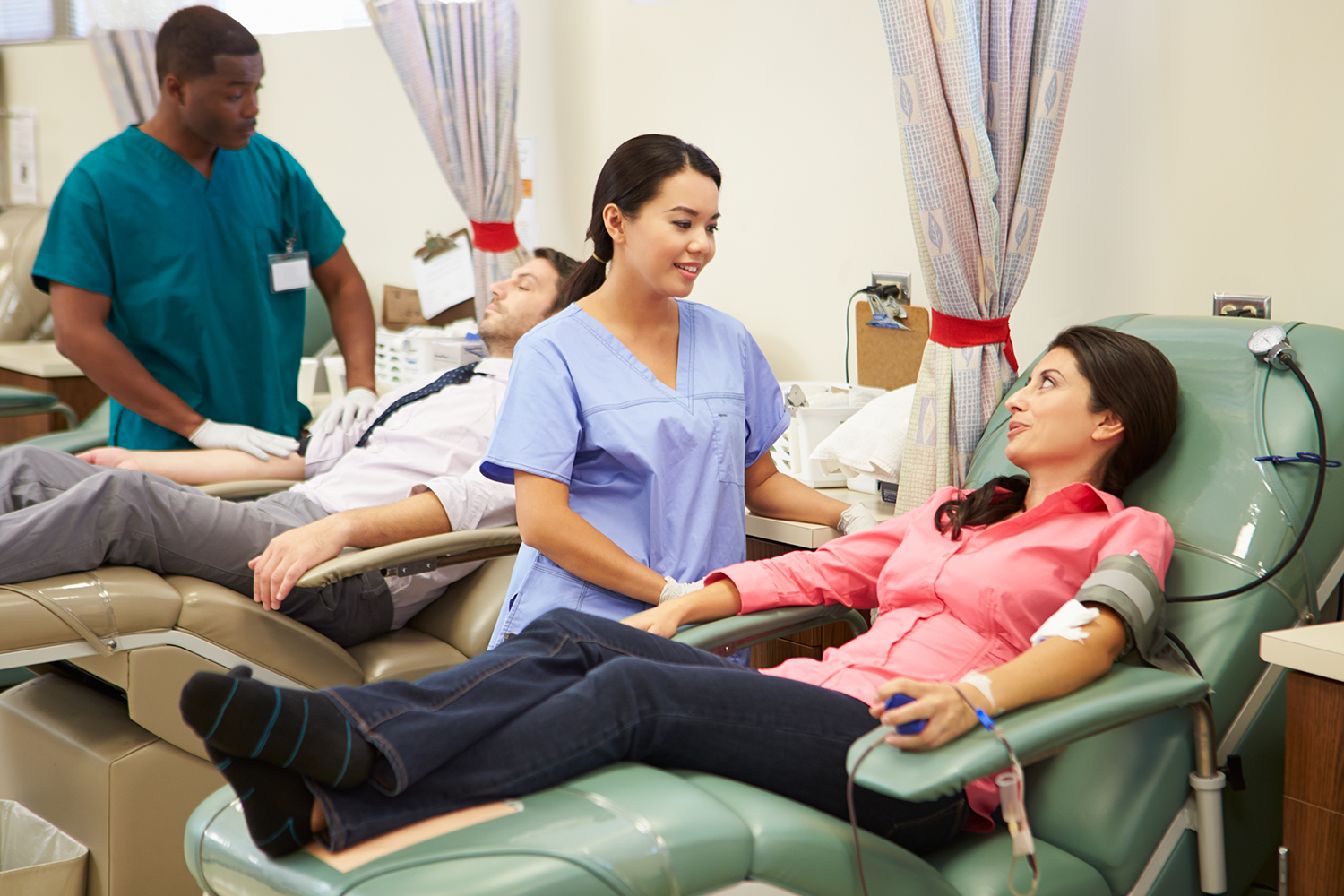You can make donating blood part of your routine! Did you know, our nation’s blood supply is almost entirely dependent on volunteer donors? Blood transfusions are one of the most frequently performed procedures in U.S. hospitals and help treat patients suffering traumatic injuries, undergoing surgery, receiving treatment for cancer or blood disorders, as well as new mothers and premature babies. Every 2 seconds of every day, a patient receives a blood or platelet transfusion.
You will need to bring any of these following forms of identification with a photo and birth date:
- Driver’s license
- State-issued ID
- Student ID card
- Passport, visa or green card
The process for donating whole blood takes about an hour from the time you walk in the door to the time you leave. This includes registration, a brief medical screening, blood collection and refreshments. Collecting one unit of whole blood only takes about 10 minutes; however, you can expect to spend more time donating products like red cells, platelets and plasma.
Donating blood does not hurt, though you might feel a pinch when the needle first goes into your arm. In that moment, think about the patients you’re helping who rely on the generosity of people like you to feel healthy. You may experience discomfort for a few seconds, but you’ll have the lasting reward of knowing you saved a life.
Find more donor FAQs online here and make donating blood a part of your regular routine!
